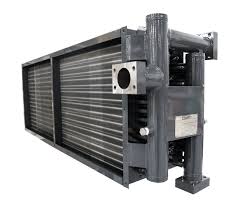Introduction
In modern industrial and manufacturing processes, compressed air and gases are used extensively for powering tools, transporting materials, and enabling automation. However, the compression process significantly increases the temperature of air and gas, which can reduce efficiency, damage equipment, and compromise safety. This is where compressed air and gas cooling systems play a vital role. By reducing the temperature of compressed media, these cooling systems protect downstream equipment, improve energy efficiency, prevent condensation-related issues, and ensure consistent air quality. Whether in small workshops or large-scale refineries, proper cooling is essential for optimizing performance and maintaining system reliability.
Why Cooling is Necessary After Compression
Protects Downstream Equipment
Compressed air exits the compressor at a high temperature—sometimes over 150°C (300°F). If this hot air reaches downstream components like valves, actuators, filters, or piping systems, it can:
- Warp seals and O-rings
- Deform or crack plastic or rubber parts
- Weaken metal fittings due to thermal cycling
- Reduce the lifespan of tools and machinery
Cooling the air minimizes thermal stress, preserving component integrity and performance.
Improves Energy Efficiency
Compressed air systems are energy-intensive. If the air is not cooled:
- It becomes less dense (lower mass of air per unit volume)
- Tools and machines perform inconsistently
- More pressure and flow are required to deliver the same performance
By cooling the air, you increase its density, which means:
- You get more usable energy per cubic meter
- You reduce the overall system load
- You save energy and cut operational costs
Prevents Moisture and Condensation Issues
Hot compressed air holds significant moisture in vapor form. If not cooled and dried, this moisture will:
- Condense in pipes as temperatures fall
- Lead to rust, scale buildup, and corrosion
- Affect pneumatic tools and clog instrumentation
Cooling combined with moisture separators or dryers:
- Removes up to 70–90% of water vapor
- Ensures dry, clean air for sensitive applications like food, pharma, and electronics
Protects Lubricants and Compressors
In lubricated compressors (e.g., oil-injected screw compressors), excessive heat can:
- Break down oil into sludge and carbon
- Cause oil foaming and leaks
- Damage seals and bearings
Efficient cooling:
- Maintains oil viscosity
- Prevents oxidation
- Ensures smooth compressor performance
Ensures Process and Workplace Safety
In gases like hydrogen, methane, or volatile organic compounds (VOCs), heat can:
- Trigger combustion or explosions
- Create unsafe pressure spikes
- Lead to gas expansion and release from valves
Proper gas cooling:
- Stabilizes pressures
- Minimizes risk of overheating or fire
- Ensures compliance with safety standards
Cooling Systems and Types
Aftercoolers
Installed after the compressor, they are the first stage of cooling. Their role is to:
- Rapidly lower the discharge temperature
- Condense and remove bulk moisture
- Reduce the load on downstream dryers
Two Types:
- Air-Cooled Aftercoolers:
- Use fans and ambient air to cool finned coils
- Economical and easy to install
- Best for smaller systems or moderate climates
- Water-Cooled Aftercoolers:
- Use cold water in a shell and tube heat exchanger
- More effective in hot environments or high-capacity systems
- Require plumbing, water quality control, and maintenance
Intercoolers
Found in multi-stage compressors, where air is compressed in stages.
- Intercoolers cool the air between stages, so the second stage doesn’t handle overheated, low-density air.
- This reduces the power needed to compress further.
- Maintains constant pressure ratios, improving reliability and efficiency.
Typical applications:
- Large-scale chemical or petrochemical plants
- Natural gas compression stations
- Any plant using centrifugal or reciprocating compressors
Heat Exchangers
Used to recover heat from the compressed gas or for advanced cooling applications.
Common Types:
- Shell & Tube – Ideal for high-pressure or high-flow systems, durable and easy to clean.
- Plate Type – Compact and efficient, used in tight spaces or packaged units.
- Finned Tube – Improved surface area, used in air-to-air or air-to-liquid exchangers.
Advanced heat exchangers are often paired with thermal energy recovery systems, where recovered heat is reused for:
- Building heating
- Process hot water
- Steam generation
Radiator-Type Coolers
- Compact, lightweight units resembling automotive radiators
- Often used in portable compressors, construction equipment, or mining rigs
- Use fans and large finned surfaces for cooling
- Limited to medium temperatures and flows
Cooling Media Used
Air
- Most common and cost-effective
- Used in ambient air conditions
- No extra utilities required
- Performance varies with ambient temperature
Water
- High heat capacity = better cooling performance
- Ideal for large-scale operations or hot regions
- Requires water treatment, circulation, and disposal systems
Oil
- Used in oil-flooded rotary screw compressors
- Oil absorbs heat during compression and is cooled using oil coolers
- Helps with simultaneous lubrication and cooling
Conclusion
Compressed air and gas cooling is far more than an auxiliary process—it’s an integral part of every high-performance compressed air system. Whether you are running high-speed automation, packaging sensitive food products, or transferring explosive gases, properly cooled compressed air ensures productivity, safety, and longevity. With advanced solutions like aftercoolers, intercoolers, and heat exchangers, businesses can maintain quality output, minimize energy loss, and reduce operational risks. Choosing the right cooling system tailored to your application leads to smoother operations, lower costs, and improved overall performance.

